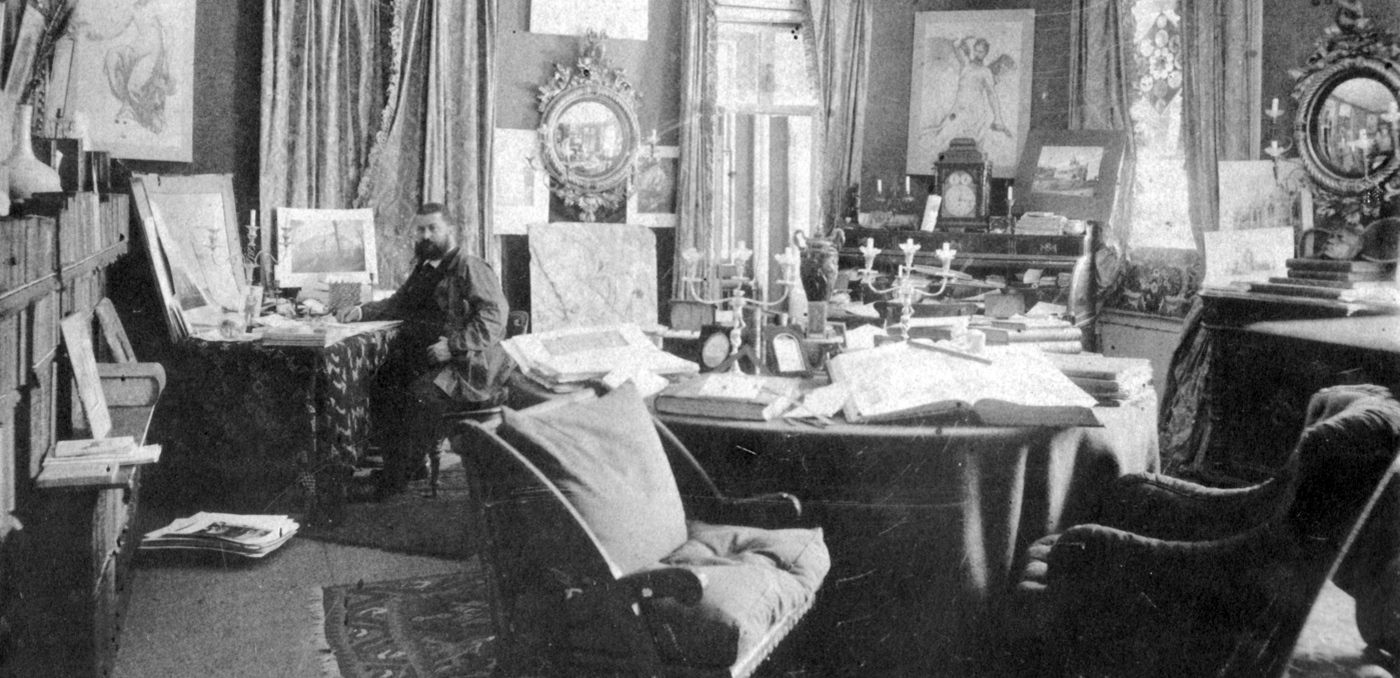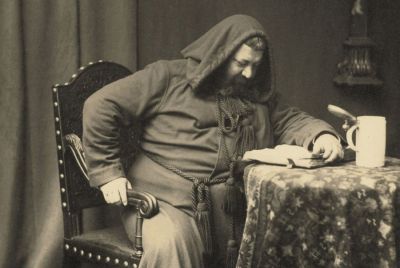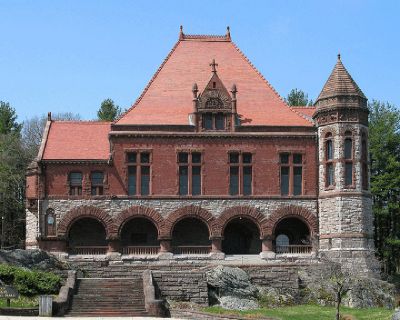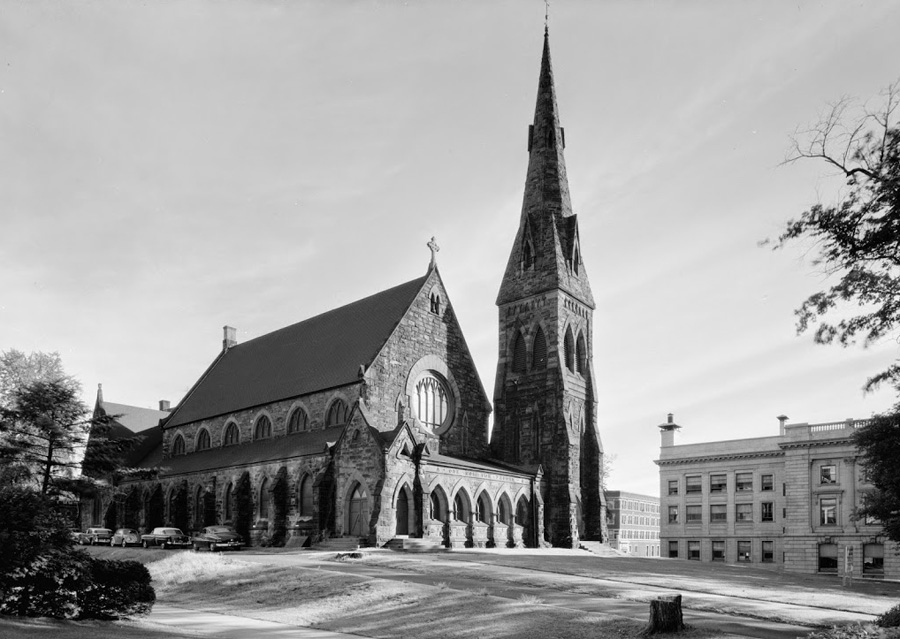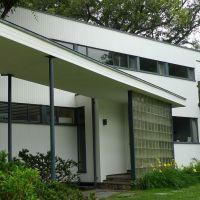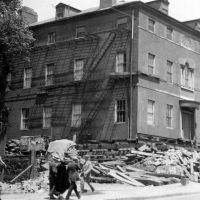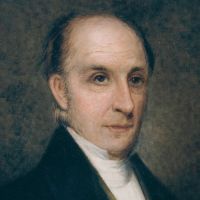Primary Source
H.H. Richardson and His Work
Mr. Richardson's Brookline office had a peculiar interest and charm. The building itself was unique. Originally, on removing from New York to Brookline, Mr. Richardson had taken for his work first one room and then a second of the dwelling-house itself; but as more space was needed an addition was made on the south side of the house, immediately adjoining the library, which is still used for office purposes in connection with the added rooms.
The library was Mr. Richardson's sanctum; but it was a sanctum to which he gave hearty welcome to all who worked with him. Dividing lines here were vaguely and dimly drawn. Mr. Richardson's own work was done, now in the library, now in the house, sometimes in one or the other of the large drawing-rooms, or again in one of the alcoves.
The men in the office used respectfully but freely the library, and on occasion invaded the house itself, the old library and even the dining-room with their drawing-boards. The life of the house overflowed continually through the office, bringing always good cheer, and sometimes a sympathy and interest the grace and helpfulness of which are among the happiest, most grateful memories of those who knew them.
Mr. Richardson had removed to Brookline at a time when he was just beginning thoroughly to appreciate and systematically to follow the architectural style which he was to make so peculiarly his own.
Quoted in "H.H. Richardson and His Work," by Edward Hale in New England Magazine, Vol. 17, Issue 4, December 1894.


